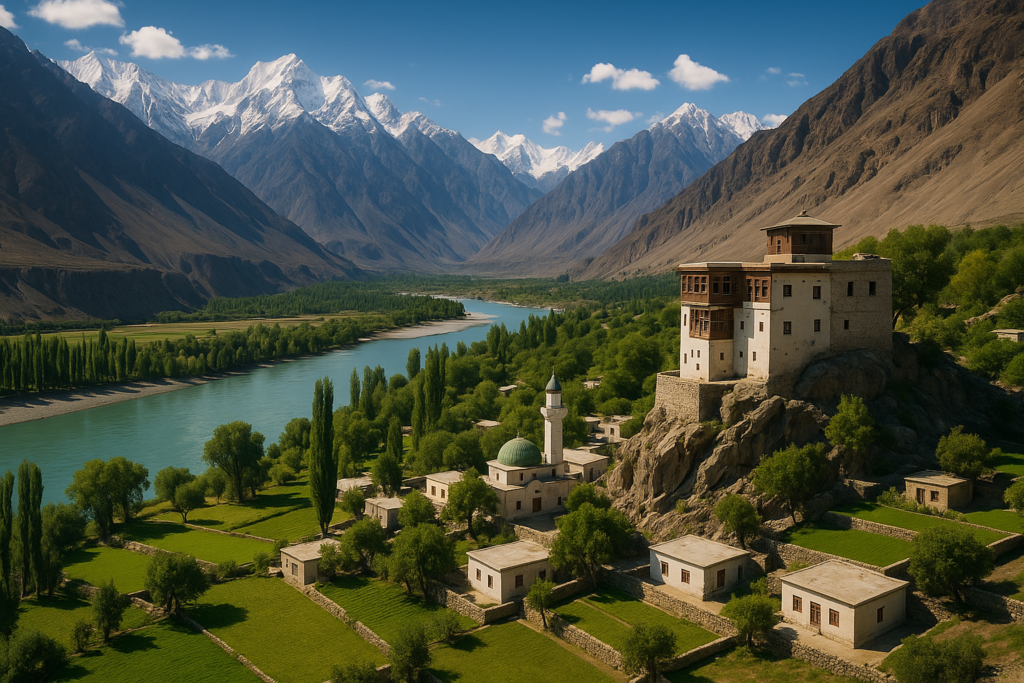- Overview
- Trip Outline
- Trip Includes
- Trip Excludes
- Gallery
- Reviews
- Booking
- FAQ
Khunjerab Pass – The Highest Paved International Border
Introduction
Khunjerab Pass is the highest border crossing between Pakistan and China, situated at an altitude of 4,693 meters (15,397 feet) above sea level. It is part of the Karakoram Highway (KKH) and serves as a vital trade route between the two countries. The pass is surrounded by majestic snow-capped mountains, offering breathtaking views and a thrilling travel experience.
How to Reach Khunjerab Pass
Route & Distance
-
Islamabad to Gilgit
- Distance: 500 km (~10-12 hours by road or 1-hour flight)
- Route: Via Karakoram Highway (KKH)
-
Gilgit to Hunza (Karimabad)
- Distance: 100 km (~2-3 hours drive)
-
Hunza to Sost
- Distance: 85 km (~2 hours drive)
- Sost is the last town before the China border, where immigration and customs are located.
-
Sost to Khunjerab Pass
- Distance: 85 km (~2-3 hours drive)
- Requires proper vehicle due to high altitude and extreme weather.
Best Time to Visit
The pass is closed in winter (November to April) due to heavy snowfall. The best time to visit is:
- May to October: Ideal weather with clear roads.
- June to August: Lush green valleys and scenic views.
- September to October: Autumn colors make the journey more picturesque.
Things to Do at Khunjerab Pass
✅ Visit the Pakistan-China Border Gate – A great spot for pictures.
✅ Enjoy the Stunning Landscape – Snow-covered peaks, glaciers, and vast valleys.
✅ Wildlife Spotting – Rare species like Marco Polo sheep, Himalayan ibex, and snow leopards can sometimes be seen.
✅ Experience the High Altitude – Standing at one of the highest border crossings in the world is an adventure itself.
Conclusion
Khunjerab Pass is a must-visit destination for those who love high-altitude travel, stunning landscapes, and adventure. The journey along the Karakoram Highway leading to the pass is filled with breathtaking views, making it one of the most scenic routes in the world.
- Day 1: Travel from Islamabad to Gilgit (by road or flight).
- Day 2: Drive to Hunza and explore local attractions.
- Day 3: Travel to Sost and then to Khunjerab Pass, return to Hunza.
- Day 4: Return journey to Islamabad.
✔ Transport (4x4 vehicle recommended)
✔ Accommodation in hotels or guesthouses
✔ Meals (breakfast, lunch, dinner)
✔ Professional tour guide
✔ Entry fees & permits
✔ First aid kit
✖ Personal expenses (shopping, snacks, souvenirs)
✖ Travel insurance
✖ Extra activities (horse riding, drone photography)
✖ Tips & gratuities
Yes, visitors need to pay a nominal entry fee at the Khunjerab National Park checkpoint.
No visa is required for visiting the Pakistan side. A visa is only needed if you plan to cross into China.
Summer: Cold but bearable (~5-15°C).
Winter: Extremely harsh with temperatures dropping to -20°C or lower.
Yes, due to high altitude, some visitors experience shortness of breath or dizziness. It is advised to:
Stay hydrated.
Take breaks and walk slowly.
Avoid long stays if you feel unwell.
It is not recommended. A 4x4 vehicle is better suited for the rough and steep terrain.
Warm clothes (even in summer)
Gloves & cap (cold winds at high altitude)
Sunglasses & sunscreen (high UV exposure)
Snacks & water (limited availability on the way)
No, mobile signals are weak or unavailable at the border.
No, it's best to carry your own food. Restaurants are available in Sost and Hunza.
No, there are no hotels or accommodations at the border. The nearest options are in Sost or Hunza.
Yes, it is a safe and family-friendly destination, but young children and elderly travelers should take precautions due to high altitude effects.






There are no reviews yet.